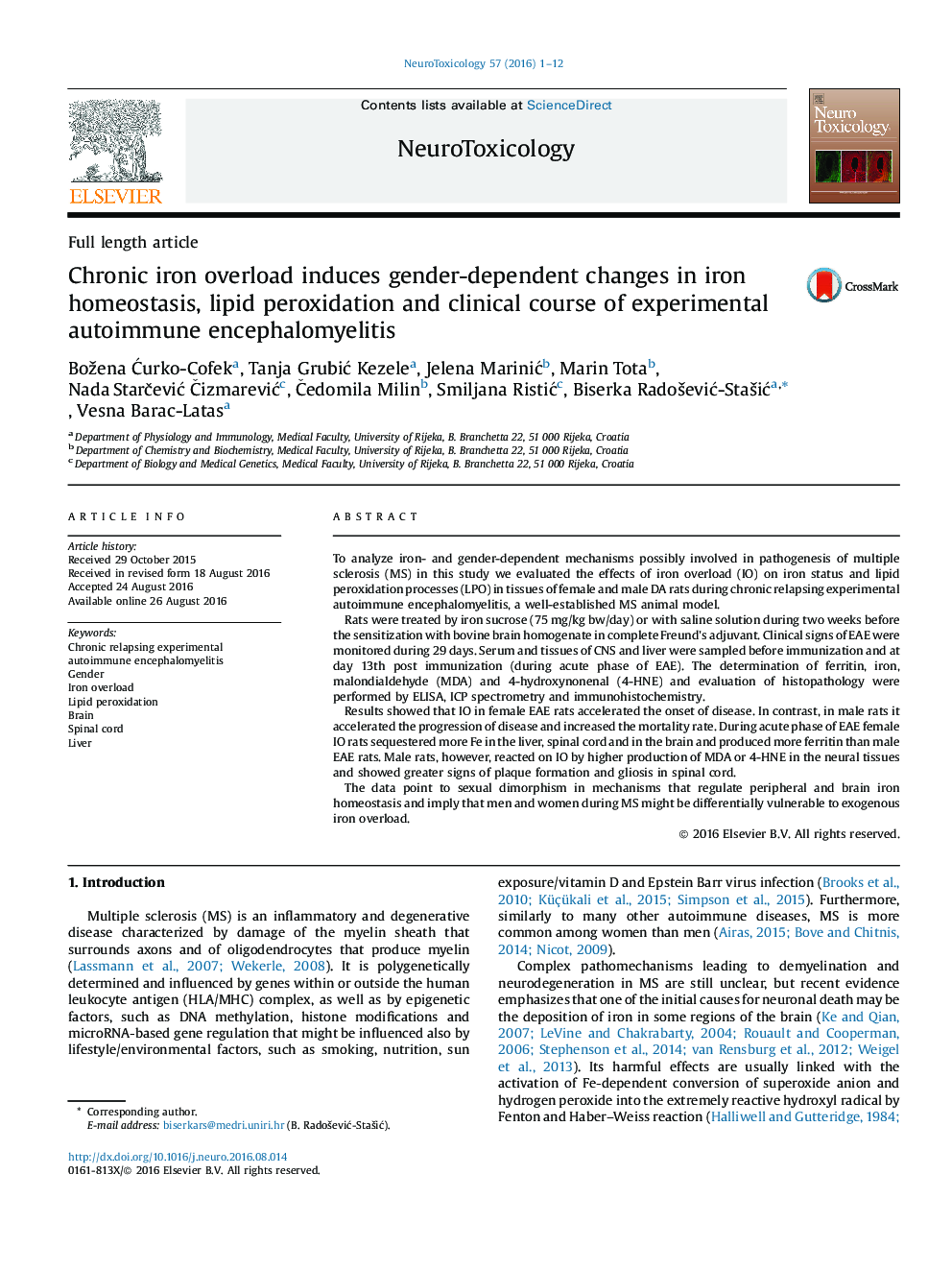| کد مقاله | کد نشریه | سال انتشار | مقاله انگلیسی | نسخه تمام متن |
|---|---|---|---|---|
| 2589397 | 1562037 | 2016 | 12 صفحه PDF | دانلود رایگان |
• Female and male DA rats were exposed to iron overload (IO) before immunization with BBH + CFA.
• IO accelerated appearance of clinical signs of EAE in female rats.
• IO accelerated the progression of EAE and increased mortality in male rats.
• IO increased sequestration of Fe (liver, brain and spinal cord) and elevated serum ferritin in female rats.
• IO induced a higher lipid peroxidation in the brain and spinal cord of male rats.
To analyze iron- and gender-dependent mechanisms possibly involved in pathogenesis of multiple sclerosis (MS) in this study we evaluated the effects of iron overload (IO) on iron status and lipid peroxidation processes (LPO) in tissues of female and male DA rats during chronic relapsing experimental autoimmune encephalomyelitis, a well-established MS animal model.Rats were treated by iron sucrose (75 mg/kg bw/day) or with saline solution during two weeks before the sensitization with bovine brain homogenate in complete Freund's adjuvant. Clinical signs of EAE were monitored during 29 days. Serum and tissues of CNS and liver were sampled before immunization and at day 13th post immunization (during acute phase of EAE). The determination of ferritin, iron, malondialdehyde (MDA) and 4-hydroxynonenal (4-HNE) and evaluation of histopathology were performed by ELISA, ICP spectrometry and immunohistochemistry.Results showed that IO in female EAE rats accelerated the onset of disease. In contrast, in male rats it accelerated the progression of disease and increased the mortality rate. During acute phase of EAE female IO rats sequestered more Fe in the liver, spinal cord and in the brain and produced more ferritin than male EAE rats. Male rats, however, reacted on IO by higher production of MDA or 4-HNE in the neural tissues and showed greater signs of plaque formation and gliosis in spinal cord.The data point to sexual dimorphism in mechanisms that regulate peripheral and brain iron homeostasis and imply that men and women during MS might be differentially vulnerable to exogenous iron overload.
Journal: NeuroToxicology - Volume 57, December 2016, Pages 1–12
